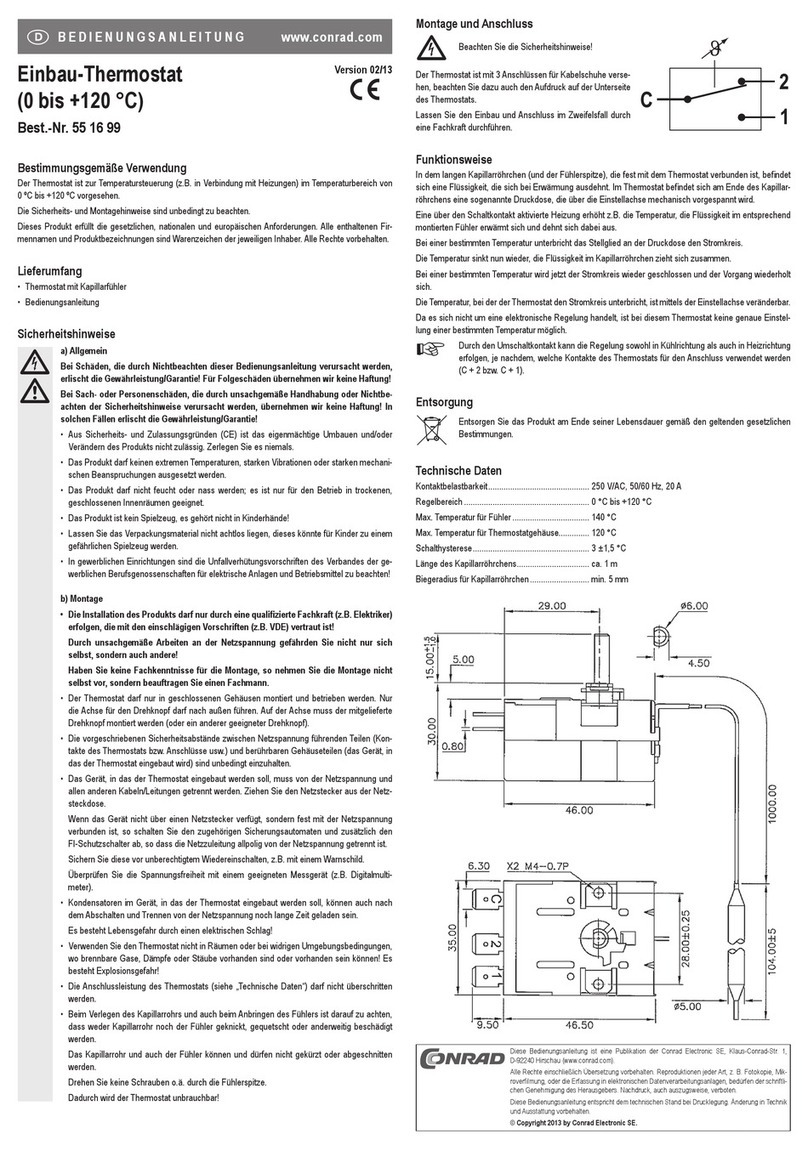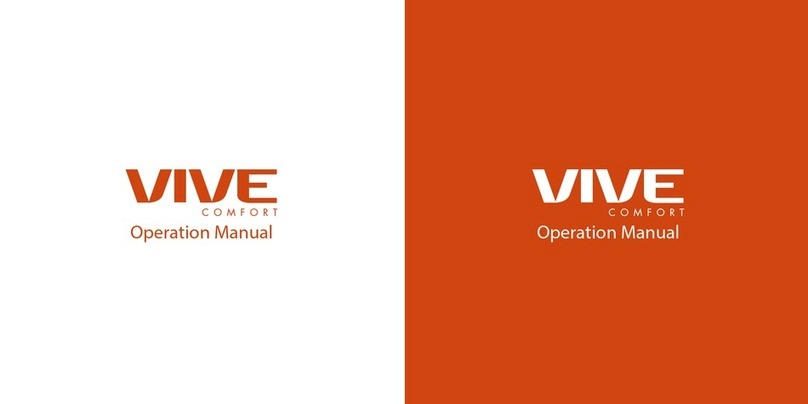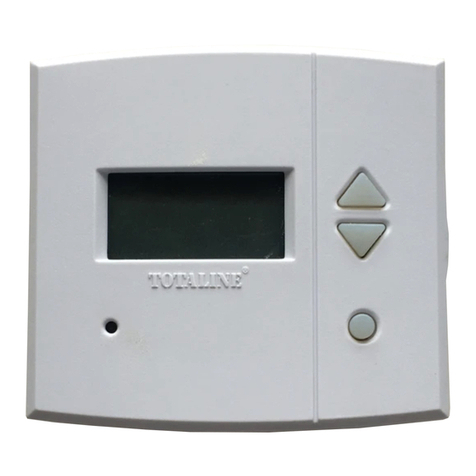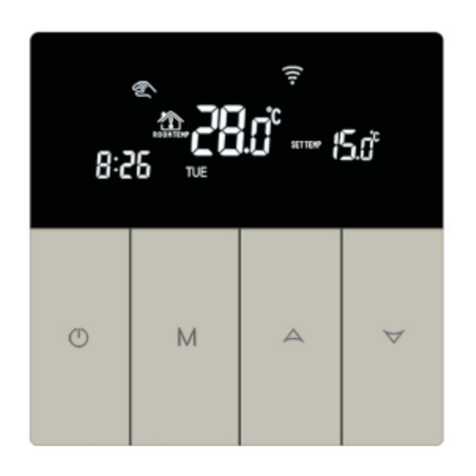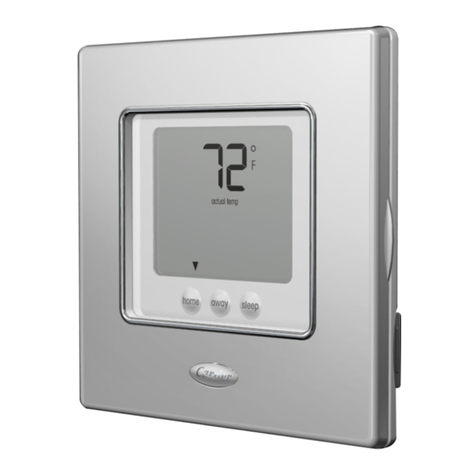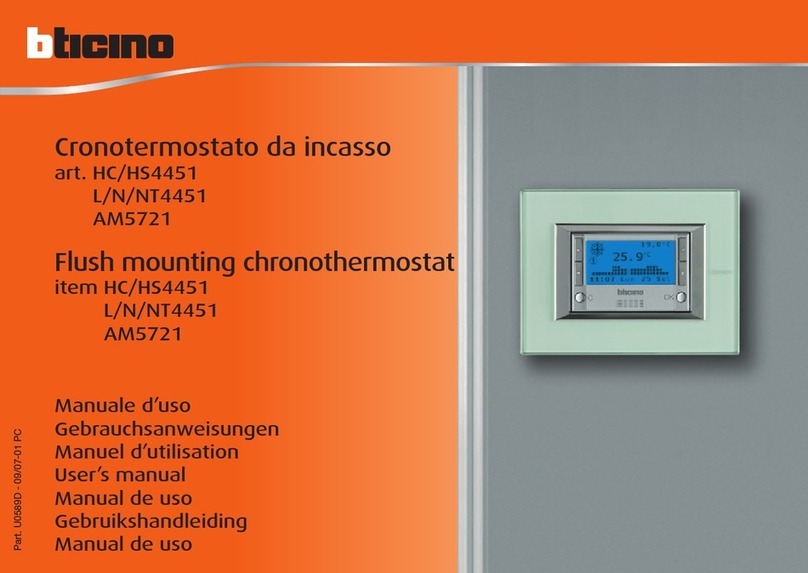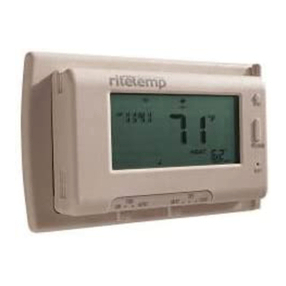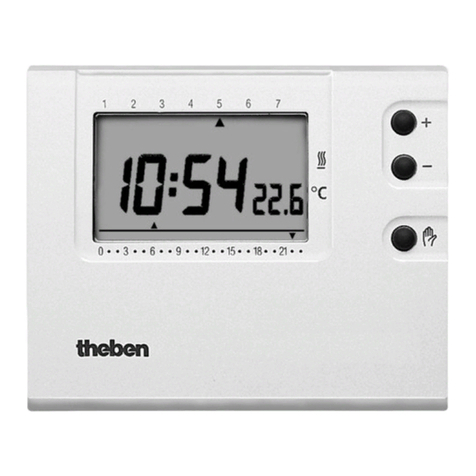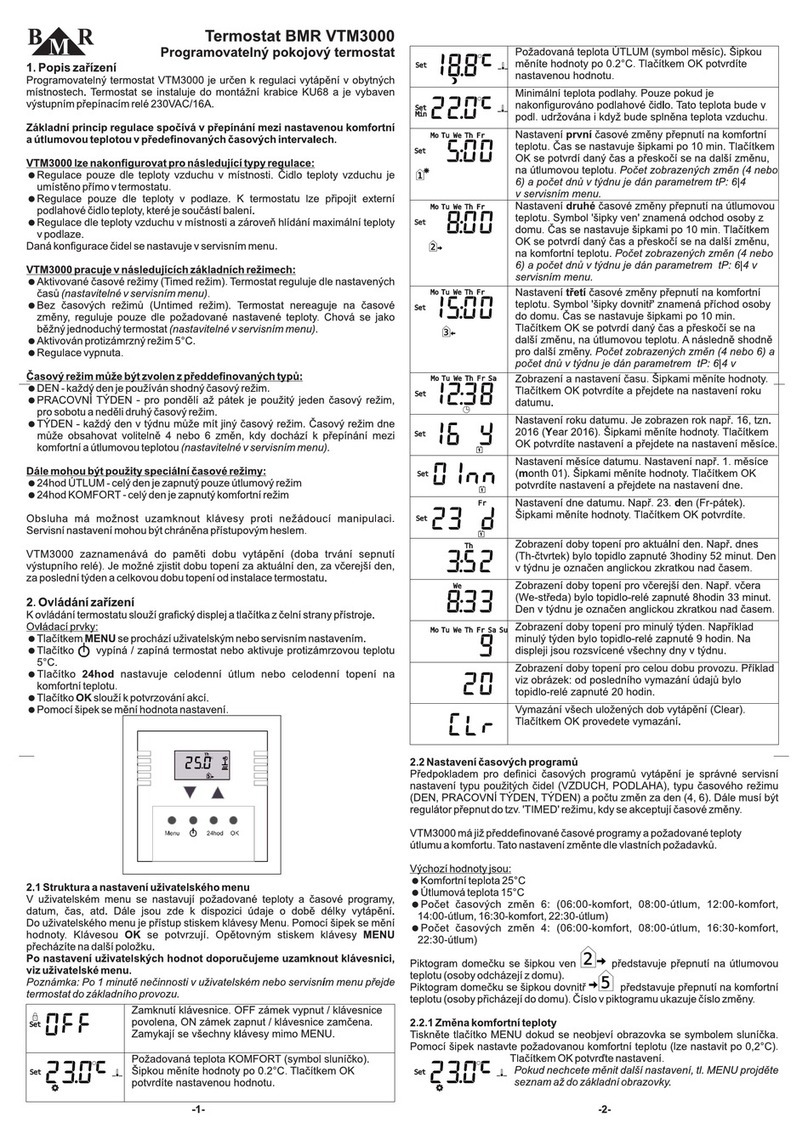Huber CC-1 Series User manual

CC®
Immersion
Circulator


OPERATION MANUAL
CC®
Immersion
Circulator


OPERATION MANUAL
V2.4.0en/08.12.20//17.12 CC®-Immersion circulator
5
CC®-Immersion
circulator
Pilot ONE®
This operation manual is a translation of the original operation manual.
VALID FOR:
CC®-E
CC®-1xx
CC®-130 Visco x
CC®-2xx
CC®-3xx
CC®-2xxx
Abbreviations used in model names:
A = polycarbonate bath, B = stainless steel bath, BX = telescope arm, C = cooling coil,
xd = greater immersion depth

OPERATION MANUAL
CC®-Immersion circulator V2.4.0en/08.12.20//17.12
6
„Pilot ONE“
Layout of the “Home”
screen

OPERATION MANUAL
V2.4.0en/08.12.20//17.12 CC®-Immersion circulator
7
Table of contents
V2.4.0en/08.12.20//17.12
1Introduction 12
1.1 Details on the declaration of conformity....................................................... 12
1.2 Safety .......................................................................................................... 12
1.2.1 Symbols used for Safety Instructions..............................................................12
1.2.2 Representation of safety identifiers ...............................................................13
1.2.3 Proper operation.............................................................................................13
1.2.4 Reasonably foreseeable misuse......................................................................14
1.3 Responsible bodies and operators – Obligations and requirements............... 14
1.3.1 Obligations of the responsible body ...............................................................14
1.3.1.1 Proper disposal of resources and consumables .........................................15
1.3.2 Requirements for operators ...........................................................................15
1.3.3 Obligations of the operators...........................................................................15
1.4 General information..................................................................................... 15
1.4.1 Description of workstation .............................................................................15
1.4.2 Safety devices to DIN 12876 ...........................................................................16
1.4.3 Further protective devices ..............................................................................17
1.4.3.1 Power interruption.....................................................................................17
1.4.3.2 Alarm functions ..........................................................................................17
1.4.3.3 Warning messages......................................................................................17
2Commissioning 18
2.1 In-plant transport......................................................................................... 18
2.1.1 Lifting and transporting the temperature control unit...................................18
2.1.1.1 Temperature control unit with lifting eyes ................................................18
2.1.1.2 Temperature control unit without lifting eyes...........................................19
2.1.2 Mounting/removing leveling feet...................................................................19
2.1.3 Positioning the temperature control unit.......................................................20
2.1.3.1 Temperature control unit with casters ......................................................20
2.1.3.2 Temperature control unit without casters.................................................20
2.2 Unpacking.................................................................................................... 20
2.3 Ambient conditions...................................................................................... 20
2.3.1 EMC-specific notes..........................................................................................22
2.4 Installation conditions.................................................................................. 22
2.5 Recommended temperature control and cooling water hoses ...................... 23
2.6 Wrench sizes and torques............................................................................. 23
2.7 Temperature control units with cooler ......................................................... 24
2.8 Temperature control unit with batch............................................................ 25
2.8.1 Operation as bath thermostat ........................................................................25
2.9 Preparations for operation ........................................................................... 25
2.9.1 Unscrewing/activating the leveling feet (if any) .............................................25
2.9.2 Externally closed and externally open applications........................................25
2.9.3 Opening/closing valves ...................................................................................26
2.9.4 Installing collecting container .........................................................................26
2.9.5 Connecting the functional earth.....................................................................26
2.10 Connecting externally closed application...................................................... 26
2.10.1 Connecting an externally closed application ..................................................26
2.11 Connecting to the power supply ................................................................... 27

OPERATION MANUAL
CC®-Immersion circulator V2.4.0en/08.12.20//17.12
8
2.11.1 Connection using socket with protective earth (PE).......................................27
2.11.2 Connection via hard wiring .............................................................................27
2.11.3 Converting the power supply connection.......................................................28
3Function description 29
3.1 Function description of the temperature control unit ................................... 29
3.1.1 General functions............................................................................................29
3.1.2 Other functions...............................................................................................29
3.2 Information on the thermal fluids ................................................................ 29
3.3 To be noted when planning the test ............................................................. 30
3.4 “Pilot ONE®” controller ................................................................................ 31
3.4.1 Functional overview of “Pilot ONE®” ..............................................................31
3.5 Clock/event function.................................................................................... 33
3.5.1 Rechargeable accumulator .............................................................................33
3.5.2 Programmable event function ........................................................................33
3.5.2.1 Event function “Alarm clock event” ...........................................................33
3.5.2.2 Event function “Program event” ................................................................33
3.6 Operation via the touch screen..................................................................... 34
3.7 Display instruments ..................................................................................... 34
3.7.1 The touchscreen [88] ......................................................................................34
3.8 Control instruments ..................................................................................... 34
3.8.1 The touchbuttons............................................................................................35
3.8.2 The categories.................................................................................................35
3.8.3 The sub-categories..........................................................................................35
3.8.4 The dialogs ......................................................................................................35
3.9 Function examples ....................................................................................... 35
3.9.1 Display of software version.............................................................................35
3.9.2 Start & Stop.....................................................................................................36
3.9.3 Copying the settings to a data carrier.............................................................36
3.9.3.1 Saving to a USB flash drive .........................................................................37
3.9.3.2 Loading from a USB flash drive...................................................................37
3.9.4 Restore factory settings ..................................................................................37
3.9.4.1 Restore to factory settings without overtemperature protection .............38
3.9.4.2 Restore to factory settings including overtemperature protection ...........39
4Setup mode 40
4.1 Setup mode ................................................................................................. 40
4.1.1 Turning on the temperature control unit .......................................................40
4.1.2 Turning off the temperature control unit.......................................................40
4.1.3 Setting the overtemperature protection ........................................................41
4.1.3.1 General information on the overtemperature protection .........................41
4.1.3.2 Setting “OT limit: heating” .........................................................................41
4.1.3.3 Setting “Process Safety” .............................................................................42
4.1.3.4 Monitoring via “Display OT values”............................................................42
4.1.4 Testing overtemperature protection for functionality ...................................42
4.1.5 Adjusting the Delta T limiter ...........................................................................43
4.1.5.1 Changing the Delta T limiter.......................................................................43
4.2 The temperature control circuit.................................................................... 43
4.2.1 Select temperature control: Internal or process ............................................44
4.2.2 Temperature control to internal temperature ...............................................44
4.2.3 Temperature control to process temperature................................................44
4.2.4 Delta T limiter .................................................................................................45
4.2.5 Monitoring the Pt100 temperature sensors...................................................45

OPERATION MANUAL
V2.4.0en/08.12.20//17.12 CC®-Immersion circulator
9
4.2.6 Optimum control parameters for optimum temperature control..................45
4.2.7 Sub-category: “Select auto/expert mode”......................................................46
4.2.8 Sub-category: “Configuration auto” ...............................................................46
4.2.8.1 Sub-category: “Find parameters”...............................................................46
4.2.8.2 Sub-category: “Control Dynamics”.............................................................48
4.2.8.3 Sub-category: “Fluid Properties”................................................................49
4.2.8.4 Sub-category: “Display parameters” ..........................................................50
4.2.9 Sub-category: “Configuration manual”...........................................................50
4.2.9.1 Sub-category: “Change parameters”..........................................................50
4.2.9.2 Sub-category: “Display parameters” ..........................................................51
4.2.9.3 Sub-category: “Control structure”..............................................................52
4.2.10 Sub-category: “Reset parameters” .................................................................52
4.2.11 Sub-category: “Display parameters”...............................................................52
4.2.12 Freeze protection for temperature control unit.............................................52
4.2.13 Setting the setpoint thresholds ......................................................................53
4.2.14 Setting the setpoint ........................................................................................54
4.3 Filling, venting, degassing and draining......................................................... 54
4.3.1 Filling, venting, degassing and draining the bath thermostat.........................54
4.3.1.1 Filling and venting the bath thermostat and the externally closed
application..................................................................................................55
4.3.1.2 Degassing of bath thermostat ....................................................................55
4.3.1.3 Draining the bath thermostat.....................................................................56
5Normal operation 58
5.1 Automatic operation .................................................................................... 58
5.1.1 Temperature control.......................................................................................58
5.1.1.1 Starting the temperature control process..................................................58
5.1.1.2 Ending the temperature control process ...................................................58
5.1.2 Temperature control via a created temperature control program ................59
5.1.2.1 Starting the temperature control program ................................................59
5.1.2.2 Ending/cancelling the temperature control program ................................59
6Interfaces and software update 60
6.1 Interfaces at the “Pilot ONE®” controller ...................................................... 60
6.1.1 10/100 Mbps Ethernet for RJ45 network sockets ..........................................60
6.1.2 USB-2.0 interface ............................................................................................61
6.1.2.1 USB-2.0 interface, host...............................................................................61
6.1.2.2 USB-2.0 interface, device ...........................................................................61
6.2 Interfaces on the temperature control unit................................................... 61
6.2.1 Interfaces at the back .....................................................................................61
6.2.1.1 Service interface.........................................................................................61
6.2.1.2 Female RS232 serial....................................................................................61
6.2.1.3 Connection jack for Pt100 process controller sensor.................................62
6.3 Firmware update.......................................................................................... 62
7Service/maintenance 63
7.1 Messages from the temperature control unit ............................................... 63
7.2 Electrical fuse............................................................................................... 63
7.3 Replacing the “Pilot ONE®”........................................................................... 63
7.4 Maintenance................................................................................................ 64
7.4.1 Function check and visual inspection .............................................................64
7.4.2 Replacing temperature control or coolant hoses ...........................................65
7.4.2.1 Replacing temperature control hoses ........................................................65

OPERATION MANUAL
CC®-Immersion circulator V2.4.0en/08.12.20//17.12
10
7.4.2.2 Replacing coolant hoses .............................................................................65
7.5 Thermal fluid inspection, replacement and circuit cleaning........................... 65
7.5.1 Thermal fluid inspection .................................................................................65
7.5.2 Rinsing the thermal fluid circuit......................................................................66
7.6 Cleaning the surfaces ................................................................................... 67
7.7 Plug contacts................................................................................................ 68
7.8 Decontamination/repairs ............................................................................. 68
8Shutting down 69
8.1 Safety instructions and basic principles ........................................................ 69
8.2 Switch-off .................................................................................................... 69
8.3 Draining the temperature control unit.......................................................... 70
8.4 Draining the cooling water ........................................................................... 70
8.4.1 Draining process .............................................................................................70
8.5 Deinstalling the collecting container............................................................. 70
8.6 Uninstalling an external application ............................................................. 70
8.7 Packing ........................................................................................................ 70
8.8 Shipping....................................................................................................... 71
8.9 Disposal ....................................................................................................... 71
8.10 Contact data ................................................................................................ 72
8.10.1 Telephone number: Customer Support ..........................................................72
8.10.2 Telephone number: Sales ...............................................................................72
8.10.3 Email address: Customer Support...................................................................72
8.11 Certificate of Compliance ............................................................................. 72
9Annex 73

OPERATION MANUAL
V2.4.0en/08.12.20//17.12 CC®-Immersion circulator
11
Foreword
Dear Customer,
Thank you for choosing a temperature control unit from Peter Huber Kältemaschinenbau AG. You
have made a good choice. Thank you for your trust.
Please read the operation manual carefully before putting the unit into operation. Strictly follow all
notes and safety instructions.
Follow the operation manual with regard to transport, start-up, operation, maintenance, repair,
storage and disposal of the temperature control unit.
We fully warrant the temperature control unit for the specified intended operation.
The models listed on page 5 are referred to in this operation manual as temperature control units
and Peter Huber Kältemaschinenbau AG as Huber company or Huber.
Liability for errors and misprints excluded.
The following trademarks and the Huber logo are registered trademarks of Peter Huber Kältemaschinenbau AG
in Germany and/or other countries worldwide: BFT®, CC®, Chili®, Com.G@te®, Compatible Control®, CoolNet®,
DC®, E-grade®, Grande Fleur®, KISS®, Minichiller®, Ministat®, MP®, MPC®, Peter Huber Minichiller®, Petite Fleur®,
Pilot ONE®, RotaCool®, Rotostat®, SpyControl®, SpyLight®, Tango®, TC®, UC®, Unical®, Unichiller®, Unimotive®,
Unipump®, Unistat®, Unistat Tango®, Variostat®. The following trademarks are registered in Germany to DWS
Synthesetechnik: DW-Therm®, DW-Therm HT®. The following trademark is a registered trademark of BASF SE:
Glysantin®.

Introduction
OPERATION MANUAL Chapter 1
CC®-Immersion circulator V2.4.0en/08.12.20//17.12
12
1Introduction
1.1 Details on the declaration of conformity
The equipment complies with the basic health and safety requirements of the European Directives
listed below:
▪Machinery Directive
▪Low Voltage Directive
▪EMC Directive
1.2 Safety
1.2.1 Symbols used for Safety Instructions
Safety instructions are marked by the below combinations of pictograms and signal words. The
signal word describes the classification of the residual risk when disregarding the operation manual.
Denotes an immediate hazardous situation that will result in death or serious injuries.
Denotes a general hazardous situation that may result in death or serious injuries.
Denotes a hazardous situation that can result in injury.
Denotes a situation that can result in property material damage.
Denotes important notes and usable hints.
Notes in conjunction with Ex px cabinets.
The safety information in this operation manual is designed to protect the responsible body, the
operator and the equipment from damage. Safety instructions appear at the beginning of each
chapter and before instructions. First inform yourself about any residual risks due to misuse before
you start an operation.
Safety information and
procedure

Introduction
Chapter 1 OPERATION MANUAL
V2.4.0en/08.12.20//17.12 CC®-Immersion circulator
13
1.2.2 Representation of safety identifiers
The following pictograms are used as safety identifiers. The table gives an overview of the safety
identifier used here.
Identifier Description
Mandatory sign
- Observe the instructions
Warning sign
- General warning sign
- observe the instructions
- Warning of electrical voltage
- Warning of hot surface
- Warning of flammable substances
1.2.3 Proper operation
Operating the temperature control unit in a potentially explosive area
DEATH THROUGH EXPLOSION
Do NOT install or start up the temperature control unit within an ATEX zone.
Improper use
SERIOUS INJURY AND PROPERTY DAMAGE
Store the operation manual where it is easy to access in close proximity to the temperature
control unit.
Only adequately qualified operators may work with the temperature control unit.
Operators must be trained before handling the temperature control unit.
Check that the operators have read and understood the operation manual.
Define precise responsibilities of the operators.
Personal protective equipment must be provided to the operators.
Be sure to follow the responsible body’s safety rules to protect life and limb and to limit dam-
ages!
Modifications to the temperature control unit by third-parties
DAMAGE TO THE TEMPERATURE CONTROL UNIT
Do not allow third parties to make technical modifications to the temperature control unit.
The EU declaration of conformity becomes invalid if any modifications are made to the tem-
perature control unit without the approval of Huber.
Only specialists trained by Huber may carry out modifications, repairs or maintenance work.
The following must be observed without fail:
Only use the temperature control unit in a fault-free condition!
Have the start-up and repairs carried out by specialists only!
Do not ignore, bypass, dismantle or disconnect any safety devices!
Overview

Introduction
OPERATION MANUAL Chapter 1
CC®-Immersion circulator V2.4.0en/08.12.20//17.12
14
The temperature control unit must not be used for any purposes other than temperature control in
accordance with the operation manual.
The temperature control unit is manufactured for industrial use. The temperature control unit main-
tains the temperature of certain applications, including glass or metal reactors or other expedient
items in laboratories and industry. Flow-through coolers and calibration baths must be used only in
combination with Huber temperature control units. Thermal fluids suitable for the overall system
are used. The chilling and heating capacity is provisioned at the pump connections or - where pre-
sent - in the tempering bath. The technical specification of the temperature control unit is given in
the data sheet (from page 73 in section »Annex«). The temperature control unit must be installed,
configured and operated according to the handling instructions in this operation manual. Failure to
comply with the operation manual is deemed improper use. The temperature control unit conforms
to state-of-the-art technology and the recognized safety regulations. Safety devices are built into
your temperature control unit.
1.2.4 Reasonably foreseeable misuse
Without an Ex px cabinet, the temperature control unit / accessory is NOT protected against ex-
plosion and must NOT be installed or put into operation within an ATEX Zone. When operating the
temperature control unit /accessory in conjunction with an Ex px cabinet, the information in the
annex (Section ATEX operation) must be observed and followed. This annex is only provided for
temperature control units /accessories delivered with an Ex px cabinet. If this annex is missing,
please immediately contact the Customer Support of Huber (the telephone number is provided on
page 72 in section »Contact data«).
Use with medical devices (e.g. in Vitro diagnostic procedure) or for direct foodstuff temperature
control is NOT permissible.
The temperature control unit must NOT be used for any purposes other than temperature control in
accordance with the operation manual.
The manufacturer accepts NO liability for damage caused by technical modifications to the temper-
ature control unit, improper handling or use of the temperature control unit if the operation manu-
al is not observed.
1.3 Responsible bodies and operators – Obligations and
requirements
1.3.1 Obligations of the responsible body
The operation manual is to be stored where it is easy to access in close proximity to the temperature
control unit. Only adequately qualified operators (e.g. chemists, CTA, physicists etc.) are permitted
to work with the temperature control unit. Operators must be trained before handling the tempera-
ture control unit. Check that the operators have read and understood the operation manual. Define
precise responsibilities of the operators. Personal protective equipment must be provided to the
operators.
▪The responsible body must install a condensation water / thermal fluid drip tray below the tem-
perature control unit.
▪The use of a drain tray may be prescribed by national law for the installation area of the tempera-
ture control unit (including accessories). The responsible body must check and apply the applica-
ble national regulations.
▪Our temperature control unit complies with all applicable safety standards.
▪Your system, which uses our temperature control unit, must be as safe.
▪The responsible body must design the system to ensure it is safe.
▪Huber is not responsible for the safety of your system. The responsible body is responsible for the
safety of the system.
▪Although the temperature control unit provided by Huber meets all the applicable safety stand-
ards, integration into a system may give rise to hazards that are characteristic of the other sys-

Introduction
Chapter 1 OPERATION MANUAL
V2.4.0en/08.12.20//17.12 CC®-Immersion circulator
15
tem’s design and beyond the control of Huber.
▪It is the responsibility of the system integrator to ensure that the overall system, into which this
temperature control unit is integrated, is safe.
▪The >Mains isolator< [36] (if present) may be provided with a facility to lock the main isolator in
the off position to facilitate safe system installation and maintenance of the temperature control
unit. It is the responsibility of the responsible body to develop any lock-out/tag-out procedure in
accordance with local regulations (e.g. CFR 1910.147 for the US).
1.3.1.1 Proper disposal of resources and consumables
Do comply with all national disposal regulations applicable for you. Contact your local waste man-
agement company for any questions concerning disposal.
Material / Aids Disposal / Cleaning
Packing material Keep the packaging material for future use (e.g. transport).
Thermal fluid
Please refer to the safety data sheet of the thermal fluid used for information on its
proper disposal.
Use the original thermal fluid container when disposing it.
Filling accessories, e.g.
beaker
Clean the filling accessories for reuse. Make sure that the materials and cleaning
agents used are properly disposed of.
Aids such as towels,
cleaning cloths
Tools used to take up spilled thermal fluid must be disposed of in the same fashion
as the thermal fluid itself.
Tools used for cleaning must be disposed of depending on the cleaning agent used.
Cleaning agents such as
stainless steel cleaning
agents, sensitive-fabrics
detergents
Please refer to the safety data sheet of the cleaning agent used for information on its
proper disposal.
Use the original containers when disposing of large quantities of cleaning agents.
Consumables such as air
filter mats, temperature
control hoses
Please refer to the safety data sheet of the consumables used for information on
their proper disposal.
1.3.2 Requirements for operators
Work on the temperature control unit is reserved for appropriately qualified specialists, who have
been assigned and trained by the responsible body to do so. Operators must be at least 18 years old.
Under 18-year olds may operate the temperature control unit only under the supervision of a quali-
fied specialist. The operator is responsible vis-a-vis third-parties in the work area.
1.3.3 Obligations of the operators
Carefully read the operation manual before operating the temperature control unit. Please observe
the safety instructions. When operating the temperature control unit, wear appropriate personal
protective equipment (e.g. safety goggles, protective gloves, non-slip shoes).
1.4 General information
1.4.1 Description of workstation
The workstation is located at the control panel in front of the temperature control unit. The work-
station is determined by the customer's connected peripheries. Accordingly, it must be designed
safe by the responsible body. The workstation design also depends on the applicable requirements
of the German occupational health and safety regulations [BetrSichV] and the risk analysis for the
workstation.
Overview

Introduction
OPERATION MANUAL Chapter 1
CC®-Immersion circulator V2.4.0en/08.12.20//17.12
16
1.4.2 Safety devices to DIN 12876
The rating of your temperature control unit is stated on the data sheet in the appendix.
Classification Temperature
control medium Technical requirements Identification d)
I Non-combustible a) Overheat protection c) NFL
II Combustible b) Adjustable overheat protection FL
III Combustible b) Adjustable overtemperature protection
and additional low-level protection FL
a) Usually water; other fluids only if non-combustible even within the temperature range of an individual fault.
b) The temperature control media must have a fire point of ≥ 65 °C.
c) The overheat protection can, for instance, can be realized using a suitable fill level sensor or a suitable temper-
ature limiter.
d) Optional at the choice of the manufacturer.
Low level protection
Probably the most frequently found type today is the level monitor with a mechanical float switch.
In the bath vessel, a floating body, which is guided in a device, floats on the surface of the thermal
fluid. Depending on the level of the thermal fluid, the float device signals the electronics a state of
good (in case of sufficient filling) or a state of bad (in case of insufficient filling). You should check
the functionality of the float device from time to time. To do so and when in stand-by mode, press
the float body into the bath with a tool (e.g. a screwdriver). The electronics must report an alarm.
Overtemperature protection (for temperature control units with heating)
Mechanical tools are no longer required for setting the trip values for the overtemperature protec-
tion. A software tool is used instead. The threshold value for the overtemperature protection can be
set only if a code randomly generated by “Pilot ONE” beforehand is entered correctly. As with the
mechanical tool, accidental settings are thus prevented. The type of overtemperature protection
function and of low level protection depends on the temperature control unit.
Rating of laboratory
thermostats and
laboratory baths
Overview of the tem-
perature thresholds

Introduction
Chapter 1 OPERATION MANUAL
V2.4.0en/08.12.20//17.12 CC®-Immersion circulator
17
1.4.3 Further protective devices
Emergency strategy – isolate the power supply!
To determine the type of switch or switch combination your temperature control unit is equipped
with, please refer to the connection sketch starting on page 73 in the section »Annex«.
Temperature control units with >Mains isolator< [36] (red/yellow or gray): Turn the >Mains
isolator< [36] to the “0” position!
Temperature control units with >Mains isolator [36] (red/yellow) and additional >Appliance
switch< [37] (gray): Turn the >Mains isolator< [36] to the “0” position! Then turn the >Appliance
switch< [37] to the “0” position!
Temperature control units with >Mains isolator< [36] (gray) and >Emergency stop switch< [70]
(red/yellow): Press the >Emergency stop switch< [70]. Then turn the >Mains isolator< [36] to the
“0” position!
Temperature control units with >Mains switch< [37]:Power supply via socket: Disconnect the
temperature control unit from the power supply. Then turn the >Mains isolator< [37] to the “0”
position! Power supply via hard wiring: Disconnect the power supply by means of the building’s
circuit breaker. Then turn the >Mains isolator< [37] to the “0” position!
Temperature control units without a switch or inside a protective housing: Connection via sock-
et: Disconnect the temperature control unit from the power supply. Connection via hard wiring:
Disconnect the power supply by means of the building’s circuit breaker.
1.4.3.1 Power interruption
Following a power outage (or when switching on the temperature control unit), this function can be
used to determine how the temperature control unit is supposed to respond. This response can be
determined via “Pilot ONE”.
OFF/Standby (Default setting)
After turning the temperature control unit on, thermoregulation is started only after manual input.
ON / Temperature control active
After turning on the temperature control unit, thermoregulation is always started. An INFO appears
for a few seconds. This makes it possible to suppress the automatic start.
Power Failure Auto
If temperature control is active during a power outage, the process will automatically continue after
the power outage.
1.4.3.2 Alarm functions
An alarm is a system state that signals unfavorable process conditions. The temperature control unit
can be programmed so that the plant operator is warned when defined limit values are exceeded.
The response of the temperature control unit to an alarm can be determined. Possible responses
are: Switch off temperature control or control temperature to a safe setpoint (2nd setpoint).
1.4.3.3 Warning messages
Warning messages contain a message about the irregularity of the temperature control unit. These
messages have no further consequences. The plant operator evaluates the relevance of the message
and takes action where necessary.

Commissioning
OPERATION MANUAL Chapter 2
CC®-Immersion circulator V2.4.0en/08.12.20//17.12
18
2Commissioning
2.1 In-plant transport
Temperature control unit is not transported / moved according to the specifications in this oper-
ation manual
DEATH OR SERIOUS INJURY DUE TO CRUSHING
Always transport / move the temperature control unit according to the specifications in this
operation manual.
Wear personal protective equipment during transport.
Always work with the specified number of persons when moving the temperature control unit
on casters (if any).
If the temperature control unit is equipped with casters and parking brakes: 2 parking brakes are always
freely accessible when moving the temperature control unit. Activate the 2 parking brakes in an emergen-
cy! If only one parking brake is activated on the casters in an emergency: The temperature control unit is
not stopped but rotates around the axis of the caster with the activated parking brake!
Temperature control unit transported in a horizontal position
DAMAGE TO THE COMPRESSOR
Only transport the temperature control unit in an upright position.
Filled temperature control unit is transported
MATERIAL DAMAGE DUE TO OVERFLOWING THERMAL FLUID
Only transport an emptied temperature control unit.
▪If available, use the lugs on the top side of the temperature control unit for transportation.
▪Use an industrial truck for transport.
▪The casters (if present) on the temperature control unit are not suitable for transport. The casters
are symmetrically loaded with 25% of the total mass of the temperature control unit.
▪Remove the packing material (e.g. the palette) only at the place of installation.
▪Protect the temperature control unit from transport damage.
▪Do not transport the temperature control unit alone and without aids.
▪Check the load bearing capacity of the transportation route and the place of installation.
▪The parking brakes must be activated at the casters (if any) and/or the leveling feet (if any) must
be unscrewed/activated before the temperature control unit is put into operation (see page 25,
section »Unscrewing/activating the leveling feet (if any)«).
2.1.1 Lifting and transporting the temperature control unit
2.1.1.1 Temperature control unit with lifting eyes
The temperature control unit is raised at the lifting eyes without load handling attachments
DAMAGE TO THE TEMPERATURE CONTROL UNIT
Always use load handling attachments when lifting and transporting the temperature control unit.
The lifting eyes are only designed for a load without inclination (0°).
The load handling attachment used must be adequately dimensioned. Take the dimensions and
weight of the temperature control unit into account.
Example: lifting eyes
(round, angular, and
recessed (left to right))

Commissioning
Chapter 2 OPERATION MANUAL
V2.4.0en/08.12.20//17.12 CC®-Immersion circulator
19
▪Do not lift and transport the temperature control unit at the lifting eyes alone and without aids.
▪Lift and transport the temperature control unit at the lifting eyes only with a crane or an industrial truck.
▪The crane or industrial truck must have a lifting force equal to or greater than the weight of the
temperature control unit. For the weight of the temperature control unit see the data sheet (from
page 73 in section »Annex«).
▪If the leveling feet were removed for shipment: Do not lower the temperature control unit until
all leveling feet have been mounted (see page 19 section »Mounting/removing leveling feet«).
2.1.1.2 Temperature control unit without lifting eyes
▪Do not lift and transport the temperature control unit alone and without aids.
▪Lift and transport the temperature control unit only with an industrial truck.
▪The industrial truck must have a lifting force equal to or greater than the weight of the temperature control
unit. For the weight of the temperature control unit see the data sheet (from page 73 in section »Annex«).
▪If the leveling feet were removed for shipment: Do not lower the temperature control unit until
all leveling feet have been mounted (see page 19 section »Mounting/removing leveling feet«).
2.1.2 Mounting/removing leveling feet
Only valid if the leveling feet have been removed for shipping.
The temperature control unit is not secured against slipping and/or lowering
DEATH OR SERIOUS INJURY DUE TO CRUSHING
Secure the temperature control unit against slipping and/or lowering before the leveling feet
are mounted.
Do not stand or lie under the temperature control unit for mounting.
The leveling feet were removed for shipping the temperature control unit. Before placing / posi-
tioning the temperature control unit all leveling feet must be mounted. If the temperature control
unit is re-shipped: Remove all leveling feet before packaging.
▪The leveling feet can only be mounted while the temperature control unit is lifted.
▪Secure the temperature control unit against slipping and/or lowering.
▪Do not stand or lie under the temperature control unit while mounting the leveling feet.
▪Do not lower the temperature control unit until all leveling feet have been mounted.
Example: Supporting
points for forklift arms
for free-standing
models from a certain
overall size. For the
exact position please
refer to the wiring
diagram in the annex.
Example: mounting
the leveling feet

Commissioning
OPERATION MANUAL Chapter 2
CC®-Immersion circulator V2.4.0en/08.12.20//17.12
20
2.1.3 Positioning the temperature control unit
2.1.3.1 Temperature control unit with casters
▪Do not use the casters for transportation to the place of installation. Observe page 18, section
»Lifting and transporting the temperature control unit«for the transport to the place of installa-
tion.
▪Use the rollers only for positioning at the place of installation.
▪Only ever move the temperature control unit on casters if the surface is level, without a gradient,
non-slip and stable.
▪Do not move the temperature control unit alone.
▪At least 2 persons are required to move the temperature control unit on casters. At least 5 per-
sons are required to move the temperature control unit on casters if the total weight of the tem-
perature control unit is over 1.5 tons.
▪The parking brakes must be activated at the casters and/or the leveling feet (if any) must be un-
screwed/activated before the temperature control unit is put into operation (see page 25, section
»Unscrewing/activating the leveling feet (if any)«).
2.1.3.2 Temperature control unit without casters
▪An industrial truck must be used for positioning the temperature control unit.
▪Do not move the temperature control unit alone.
▪At least 2 persons are required to move the temperature control unit.
▪The industrial truck must have a lifting force equal to or greater than the weight of the tempera-
ture control unit. See the data sheet (from page 73 in section »Annex«) for the weight of the
temperature control unit.
▪The leveling feet (if any) must be unscrewed/activated before the temperature control unit is put
into operation (see page 25, section »Unscrewing/activating the leveling feet (if any)«).
2.2 Unpacking
Starting up a damaged temperature control unit
MORTAL DANGER FROM ELECTRIC SHOCK
Do not operate a damaged temperature control unit.
Please contact the Customer Support. The telephone number can be found on page 72, section
»Contact data«.
PROCEDURE
Check for damage to the packaging. Damage can indicate property damage to the temperature
control unit.
Check for any transport damage when unpacking the temperature control unit.
Always contact your forwarding agent regarding the settlement of claims.
Follow the instructions for the disposal of packaging material on page 15 section »Proper dis-
posal of resources and consumables«.
2.3 Ambient conditions
Unsuitable ambient conditions/unsuitable installation
SERIOUS INJURY DUE TO CRUSHING
Comply with the requirements under sections »Ambient conditions«and »Installation condi-
tions«.
Make sure there is adequate fresh air available at the site for the circulation pump and the com-
pressors. The warm exhaust air must be able to escape upwards unhindered.
Free-standing model
For the connection data, see the data sheet (from page 73 in Section »Annex«).
This manual suits for next models
4
Table of contents
Other Huber Thermostat manuals
Popular Thermostat manuals by other brands
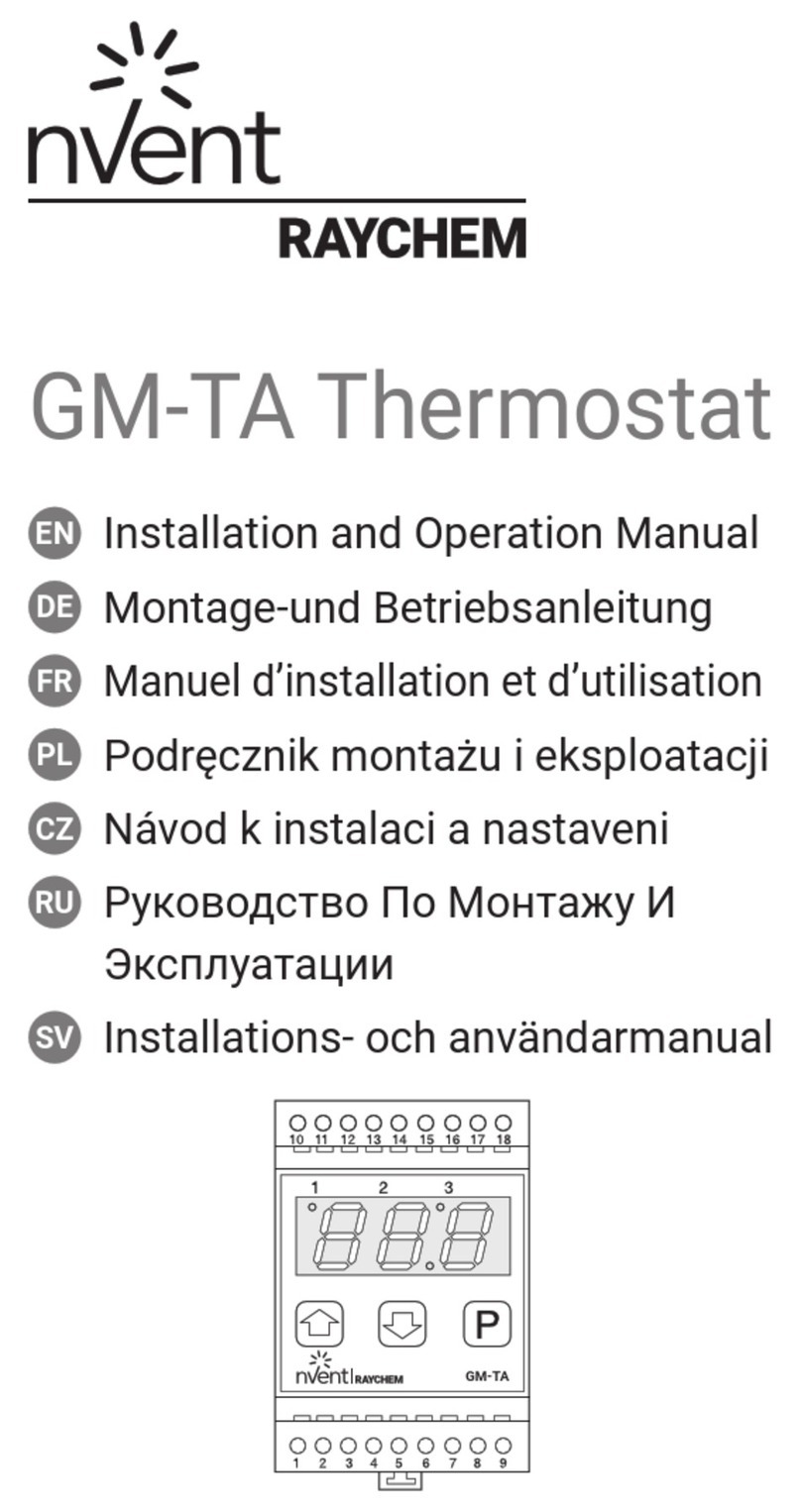
nVent RAYCHEM
nVent RAYCHEM GM-TA Installation and operation manual
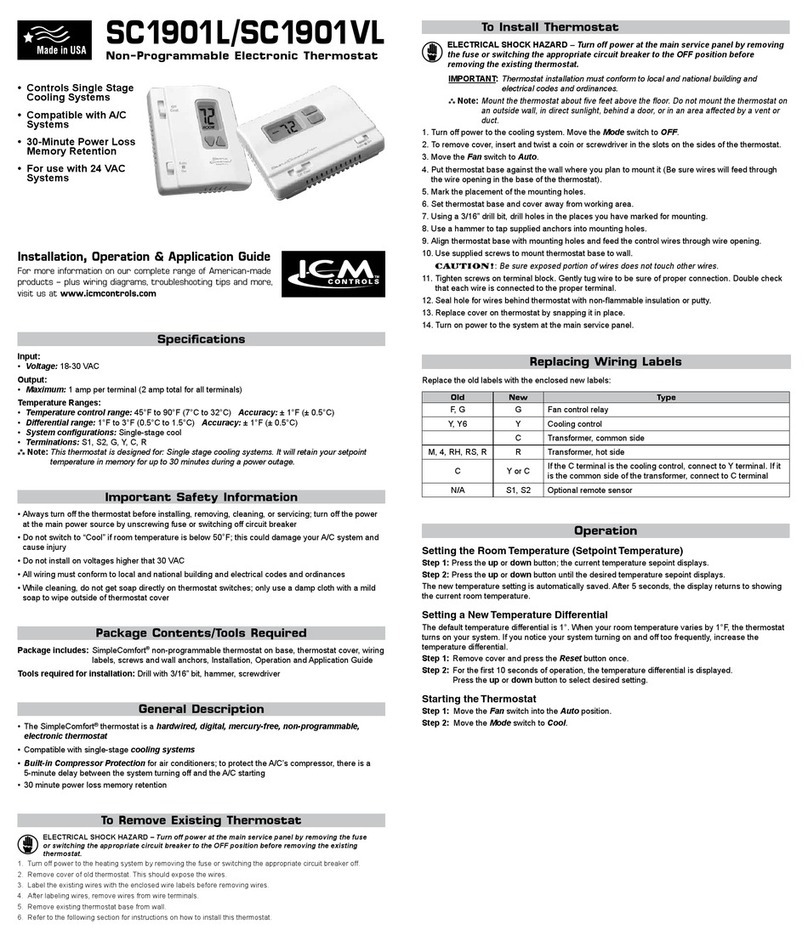
ICM Controls
ICM Controls SC1901L Installation, operation & application guide

Heatmaster
Heatmaster Millennium 8000 Series user manual
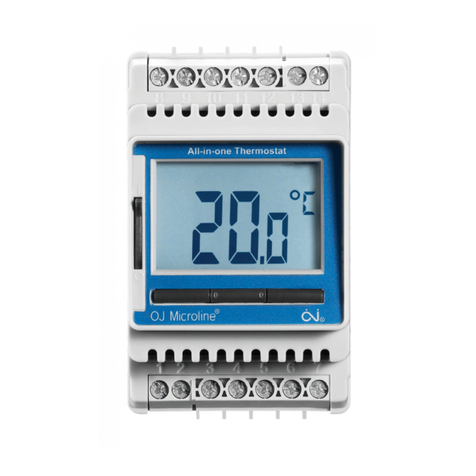
OJ Electronics
OJ Electronics ETN4-1999 manual
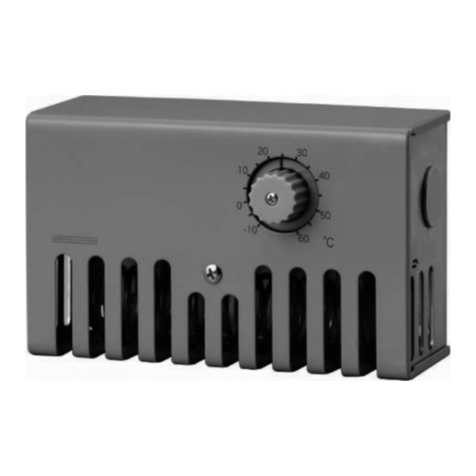
Azbil
Azbil TY6300Z1000 Specifications & instructions
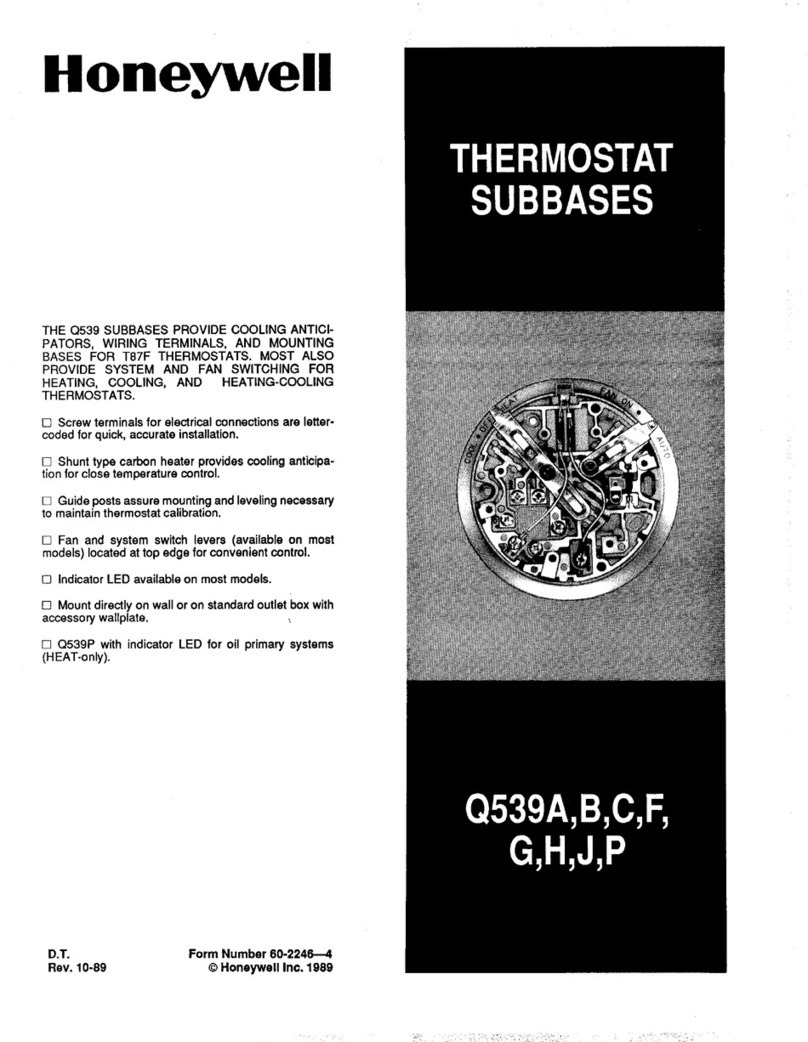
Honeywell
Honeywell Q539A Installation and operation manual


